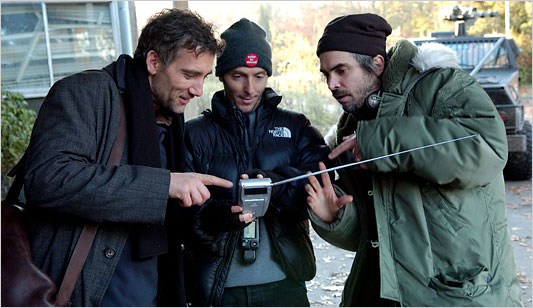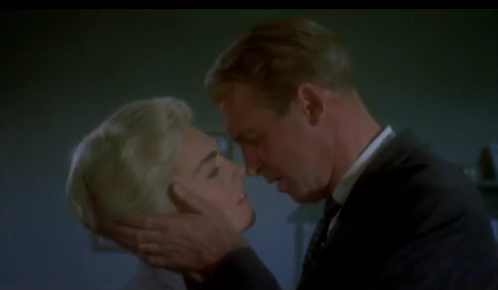
CHILDREN OF MEN (2006, Cuarón)
In terms of current work, Alfonso Cuarón is my favorite director. There I said it. Whether he’s posing for a faux promo pic (he’s above, right), directing a tiny character piece (Y Tu Mama Tambien) or a huge franchise (Harry Potter), or spouting off on film theory, it’s honest, surprising, insightful, heartfelt, hilarious and/or terrifying and more often than not, just plain brilliant. Even his least successful film, Great Expectations, is worth the price of admission just for its first half.
I recently read a short interview with him in The Bagger’s New York Times article from 2006 when Children of Men was released. I include this excerpt here, not particularly apropos to today’s post, but because once again Cuarón perfectly articulates something I’ve believed for a long time, but never boiled it down so succinctly. It’s part and parcel to the intelligence and artistry he exhibits in today’s shot.
Alfonso Cuarón on Theme in Cinema
“What I hate is when cinema is hostage of narrative… let cinema breathe…narrative is an element of the cinematic experience, but it’s [just] an element, as acting is an element, cinematography is an element. Music and decors, those are elements. But right now? Cinema becomes just about seeing illustrated stories as opposed to engaging audiences in an experience in which you don’t explain [too] much….[it is a film’s exploration of themes, as opposed to its narrative, that determines its ultimate success.]”
I think that’s such an important point to make. If a film’s story is its body, then its themes are its nerves – and a good director needles those nerves until by end credits, he’s hit them so directly as to light up the whole experience; make the body jolt to life. If you ever want to enjoy what I think is a perfect exploration of theme, it’s Eastwood’s Unforgiven. Gorgeous.
So, on to the shot. Not to necessarily be pre-occupied with oners, because there are so many other elements (to borrow Cuarón’s phrasing from above) that go into to an amazing shot, but here’s another incredible example nonetheless! In a single shot, Cuarón creates an entire experience, with beginning, middle and end. It’s gripping, weighty, and exciting. I’ll admit, the part with the ping-pong ball is a bit weird, but it does its job in the structure of the sequence. This shot is so rich in action and story beats that upon first viewing of the movie, it’s nearly impossible to clock this scene’s all going down in one shot. At least that was my experience. There’s just so much being accomplished!
I would suspect this sequence wouldn’t be quite as impacting had there been cuts in place of the horrible nightmare that unfolds and escalates in real time before our eyes. What do you think?
As Shakespeare wrote, “So quick bright things come to confusion.”


Eric Johnson
That can’t possibly be all one take. Just when I think I had it figured out (the camera must be suspended from a rigging, coming through a sun-roof that’s digitally covered up), they get out of the car and the car drives away. Nope. I don’t believe it.
jsbfilm
There’s a whole making-of this shot on the DVD. The camera operator was actually remotely operating on the roof of the car, and the rig was built into the car, with a little track for it to go forward and back, so no digital removal of anything needed. BUT, and I think you’re onto something, I wouldn’t be surprised if there were a digital stitch here or there to combine parts of the sequence, especially when they get out of the car.
Pingback: “Children of Men”: “Last one to die, please turn off the lights” « Radu presents: The Movie-Photo Blog
Pingback: A Oner is Funner | shot4shot